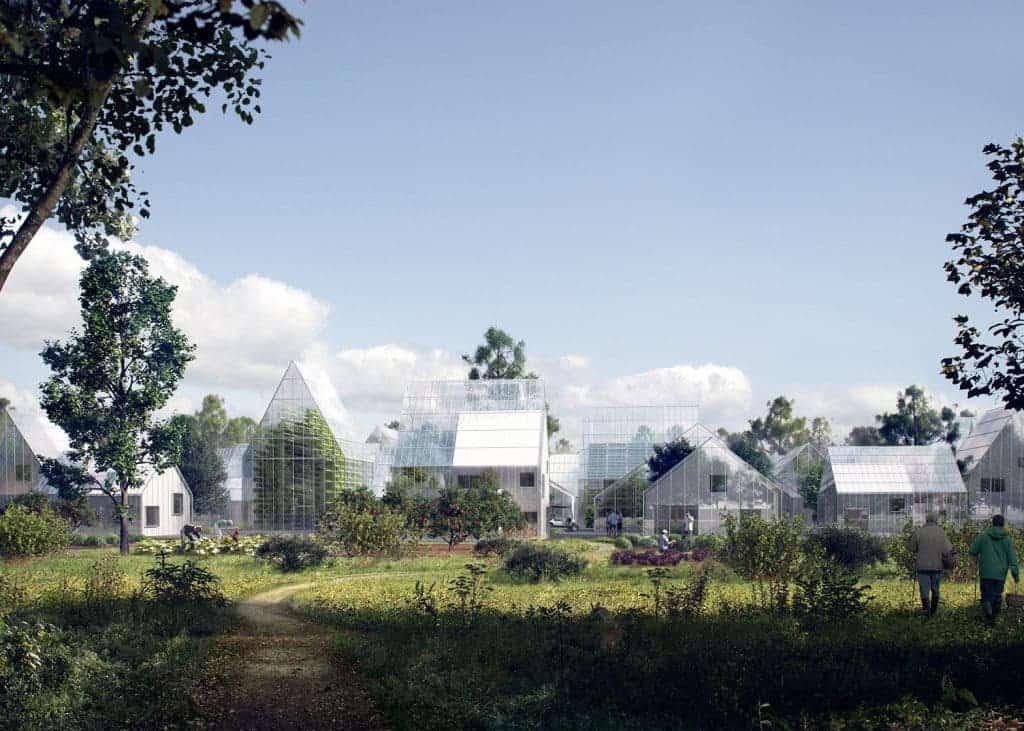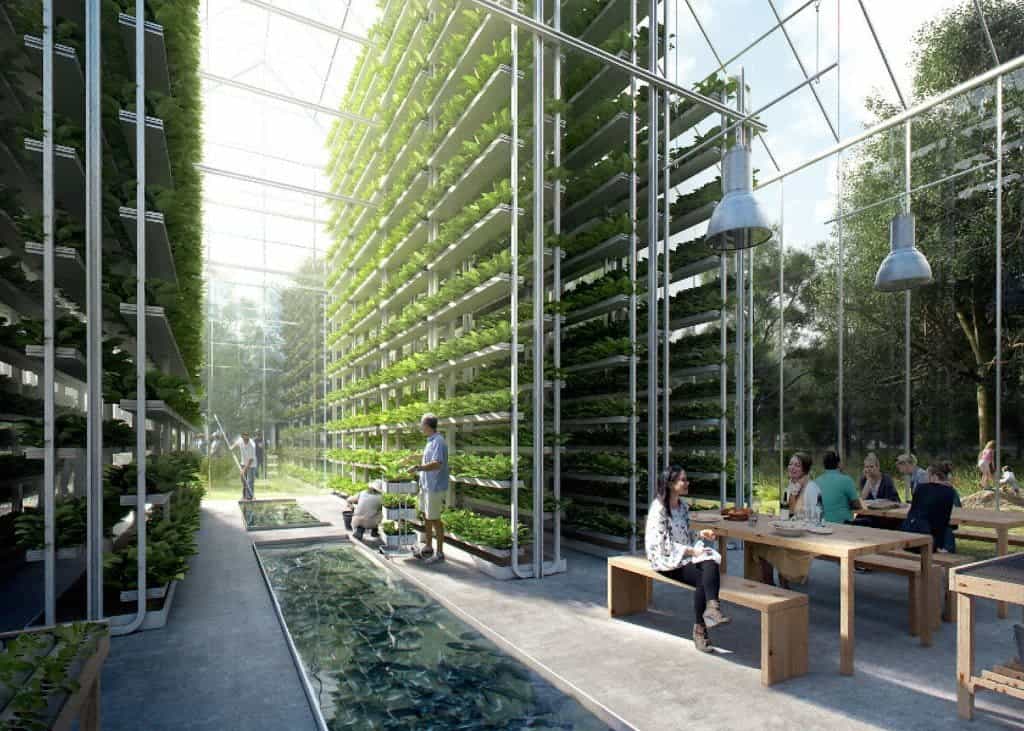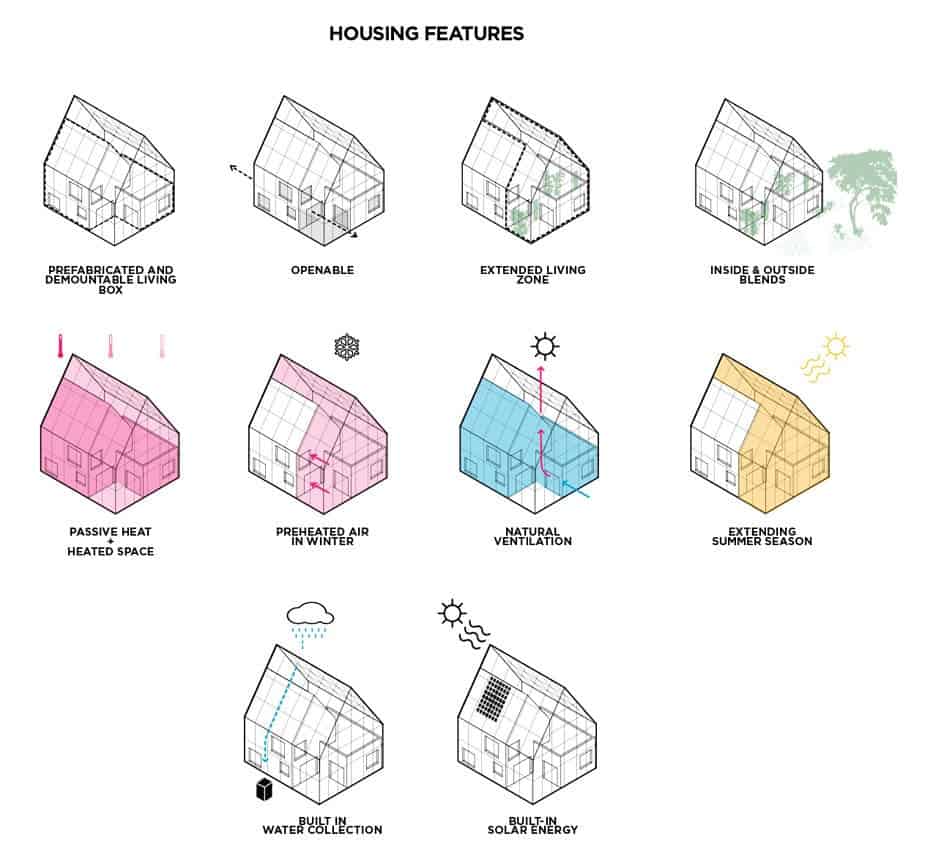Danish studio EFFEKT presented its vision for futuristic, green villages. Called ReGen Villages, the project imagines a community of buildings that produce all their own food and energy, while being off the grid and having an extremely low environmental impact.
The ReGen villages would comprise of houses with attached greenhouses, creating a friendly space where families can grow fruits and veggies, farm aquaponics and recycle waste products. The villages would produce their own energy using renewable sources, so they would be completely off the grid and not require any outside input. Individual homes would integrate photovoltaic solar panels to generate power and heat water. They would also feature passive heating and cooling systems, as well as natural ventilation, reducing energy consumption as much as possible. It almost sounds too good to be true, but the best thing about it is that the technology is already here.
“Our modern lifestyle is utterly unsustainable and this calls for more resilient solutions for the future,” explained EFFEKT partner Sinus Lynge. “The technology already exists, it is just a matter of applying science into the architecture of everyday life.”
In fact, the first pilot is set to take off this summer in the Netherlands, but other pilots are in the works for Sweden, Norway, Denmark and Germany, and there are also plans in development for the UAE, China and Africa.
What makes me like this idea even more is not only the technology and eco-friendliness of the project, but also the way in which it focuses on the community. Inhabitants are encouraged to collaborate through the very design of the village. Residents also become part of the local eco-system, with different families can take on different roles in the community. As well as fostering a sense of camaraderie, this reduces bureaucracy.
“ReGen is about more than reducing,” said Lynge. “It is about creating, creating a better model for a sustainable future, where the current living standards can be sustained by thinking smarter, not only smaller.”
The company is currently working with local municipalities to find suitable areas of land and then appointing architects and construction workers – so this is not happening at some point in the future, it’s happening now. The company will also communicate with residents regularly, to draw feedback and improve future works. The project will be on show inside the Danish Pavilion during the Venice Architecture Biennale 2016.






